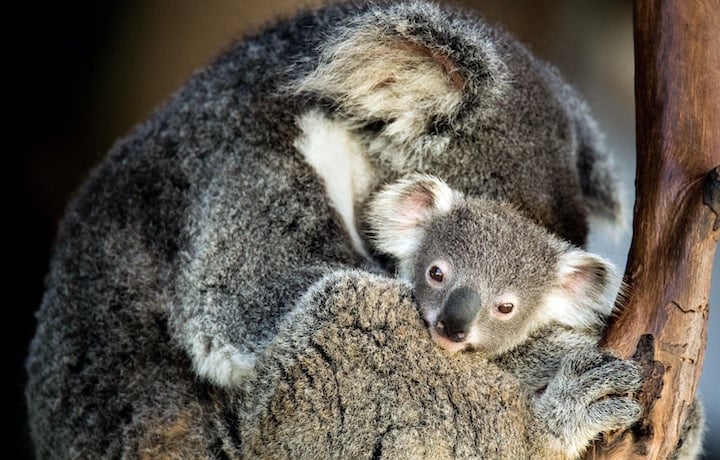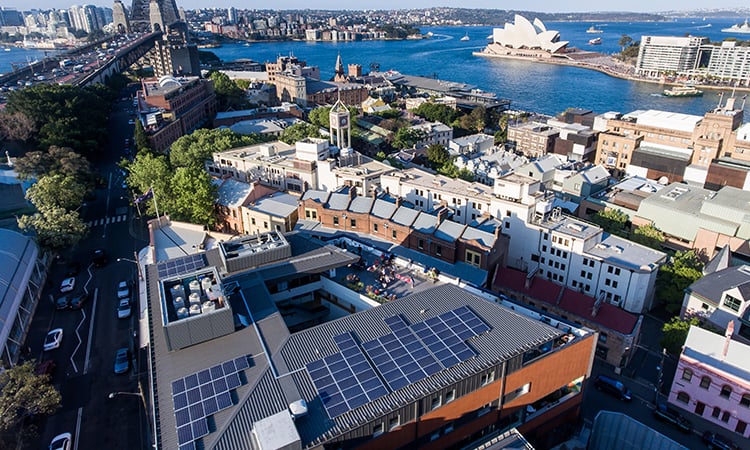12 curious facts about koalas
They aren't bears
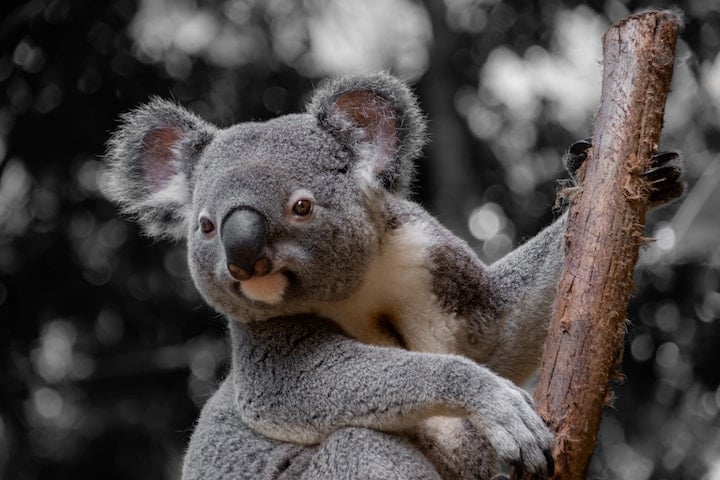
Image: Destination NSW
Despite their scientific name, Phascolarctos cinerus, meaning literally ‘grey bear’, and the hilarious urban myth of their bloodthirsty relative, the ‘drop bear’, koalas are actually marsupials, and not in any way related to bears.
Like all marsupials, koalas give birth to underdeveloped young, who need to live in their mother's pouch for the first 6 months of their life. In the case of koalas, the youngsters tend to ‘cling’ on a little longer than that, too – spending a further 6-12 months after leaving the pouch being taught the ropes and getting piggy backs from their parent.
They don’t all look the same
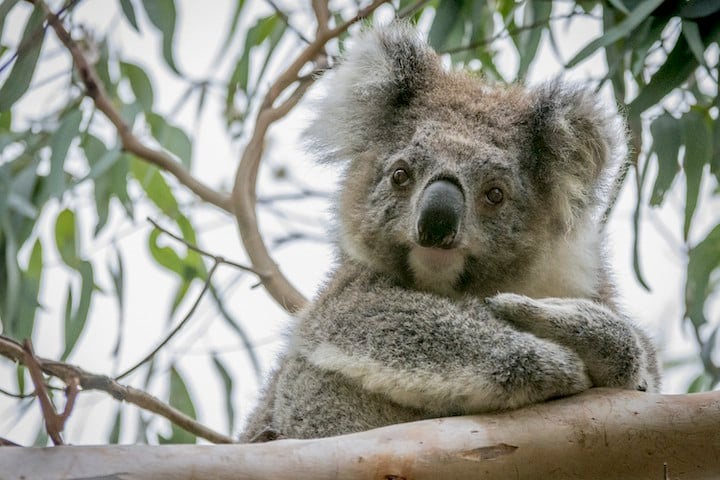
Image: Darren Donlen/Visit Victoria
While you may have a cute image in your head of what koalas looks like, there’s quite a bit of variation to be found among them. The northern and southern koala differ significantly – the northern koala is smaller, lives mostly in Queensland and New South Wales and has lighter, greyer fur and a pointier face. The southern variety, found in Victoria and South Australia, is bigger, more brown hued and altogether rounder.
Males and females also differ: For both species, males tend to have a larger, bulbous black nose, a broader head and a big scent gland on their chest (for marking their territory). Females are smaller, have a more delicate nose and lack the scent gland.
Their main food source is poisonous
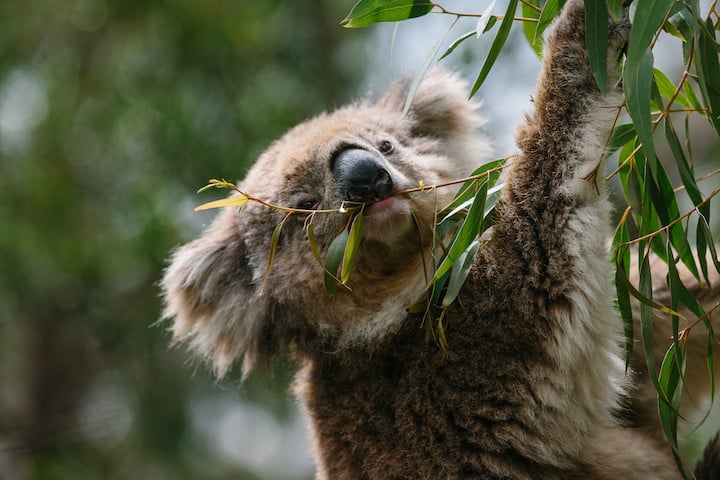
Image: Darren Donlen/Visit Victoria
Koalas’ diet consists almost entirely of leaves from Australia’s native eucalyptus trees. The oils in these leaves are toxic to most other animals and contain molecules chemically comparable to cyanide. Thankfully, koalas have evolved a special digestive organ to help them process the leaves via fermentation – but it’s a lengthy process, and the amount of nutrition koalas are able to derive from their primary food source is minimal, meaning they have to eat a LOT.
Koala mothers feed their babies their poop
Koalas are not born with the iron stomachs required for a lifetime of eating poison. Instead, their guts need to be trained. How, you ask? Well… By eating their mothers’ fecal matter, of course.
While koala joeys are still pouch-bound, driven by instinct, they will stick their heads out of a special opening at bottom of the pouch and consume a secreted pap substance (it’s basically poop!) from their mother’s… You know where. This gross but necessary process helps prepare their gut with the required bacteria for breaking down toxic eucalyptus leaves for the remaining 8-15 years of their life.
They don’t drink water (usually)
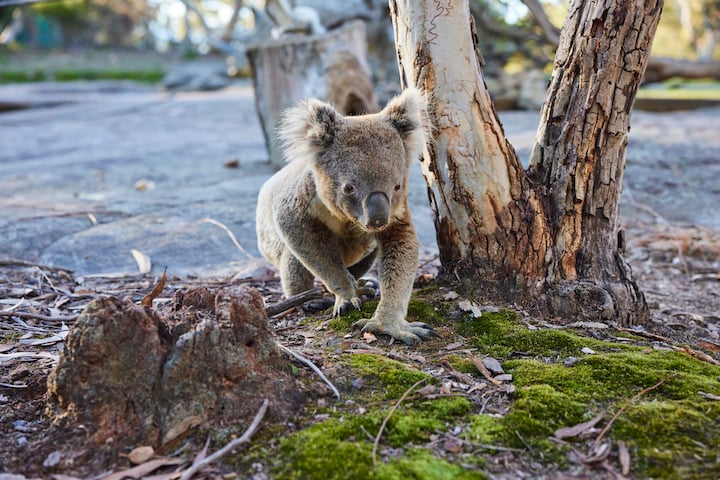
Image: Destination NSW
As a result of their sedentary lives and high intake of moisture-filled leaves, koalas rarely need to drink water. In fact, their common name derives from the Dharug (Aboriginal people from the Blue Mountains area) word, ‘gula’, meaning ‘no water’. However, as a result of drought, rising temperatures and the destruction of their habitats, koalas increasingly need to interrupt their naps to climb down and find water. If you’ve ever seen their adorably pathetic, toddler-esque crawl along the ground, you’ll see how this can leave them vulnerable to anything wanting a fuzzy snack.
They have 2 thumbs on each ‘hand’
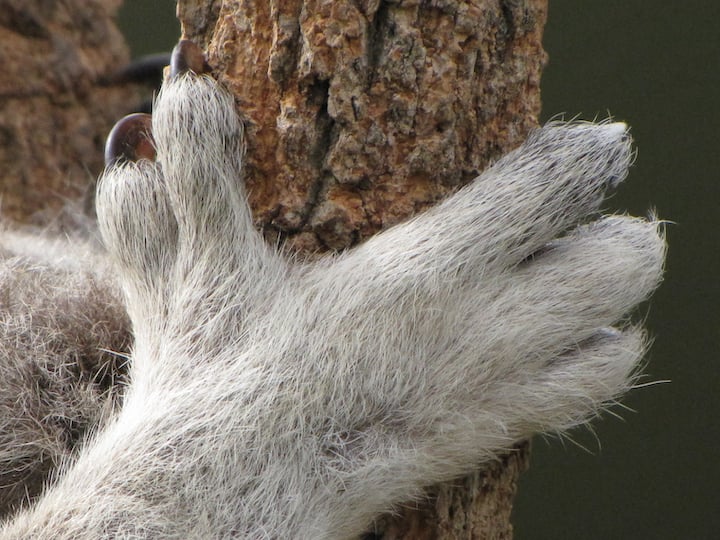
Image: YoriHirokawa
Koalas' digits are specially adapted for optimal tree-gripping, and they are one of a select few animals blessed with opposable thumbs. But unlike the other tree-dwelling creatures capable of giving a thumbs up, koalas actually have 6 opposable thumbs in total – two on each of their front paws, and one more on each of their feet.
The peculiarity doesn't stop there – their other fingers and toes are also highly specialised and have claws tailored to certain tasks like foraging, gripping branches and scoring territorial markings into trees. Interestingly, the clawed second and third toes on their back paws are are fused together like a comb – perfect for scratching and grooming.
They sleep more than any other mammal
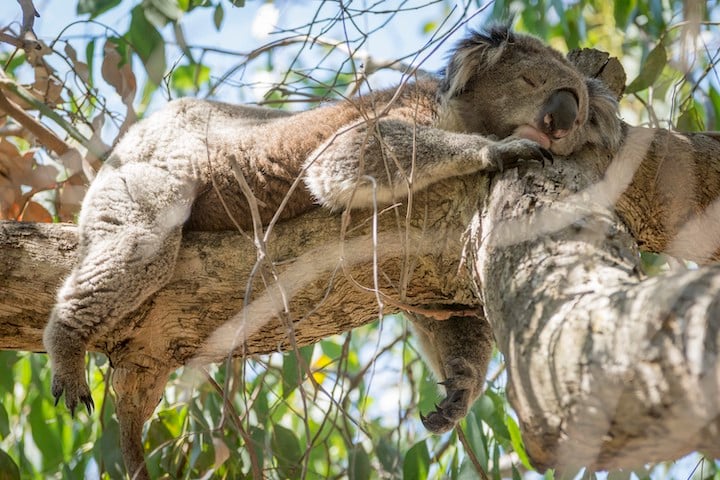
Image: Darren Donlen/Visit Victoria
Koalas sleep for up to 22 hours a day, and during the daylight hours, you'll most likely find koalas fast asleep in the fork of a tree. The remaining 2 hours (usually at night, dawn or dusk) are almost entirely spent eating, as they try to cram in as much sustenance from the nutritionally-lacking leaves they eat as possible.
Pro tip: If you're out in koala country while the sun's up and want try to spot one, don't look up – look down. A greenish pile of their droppings is usually the best way to locate them while they're tucked – dead-still and camouflaged – into the treetops.
They have no tails
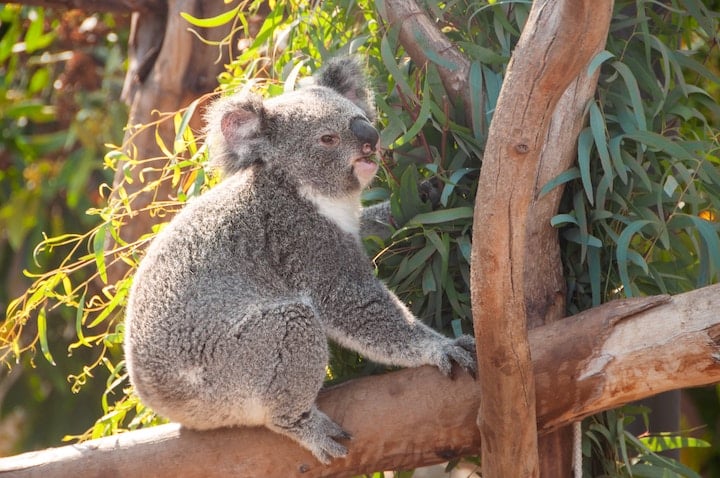
While this might seem obvious, koalas don’t have tails. This is a trait they share with a fairly short list of other mammals, including apes, some bears and certain large rodents like the capybara and guinea pig. In the absence of even a vestigial little tail nub, koalas come equipped with specially adapted rear ends, which are padded with cartilege and extra-thickly matted fur – perfect for wedging themselves in a tree for long stints, or even cushioning a fall.
They have tiny, smooth brains
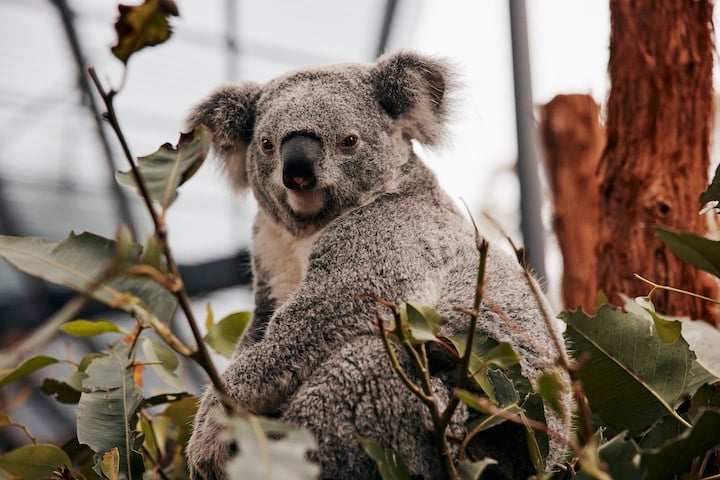
Image: Darren Donlen/Visit Victoria
Koala brains are quite small, typically weighing around 19 grams – a mere 0.2% of their body weight. This unimpressive brain-to-body ratio is below average among mammals, and to compound the issue, koala brains also have fewer folds (meaning less surface area and processing power) than other species of marsupial, which are already fairly primitive in terms of brain development.
This is all to say that koalas are not very smart. Whether this is a result of millennia of evolution spent eating food with next-to-no nutritional value, or thinking about nothing but their next nap, is anyone's guess.
They sound demonic
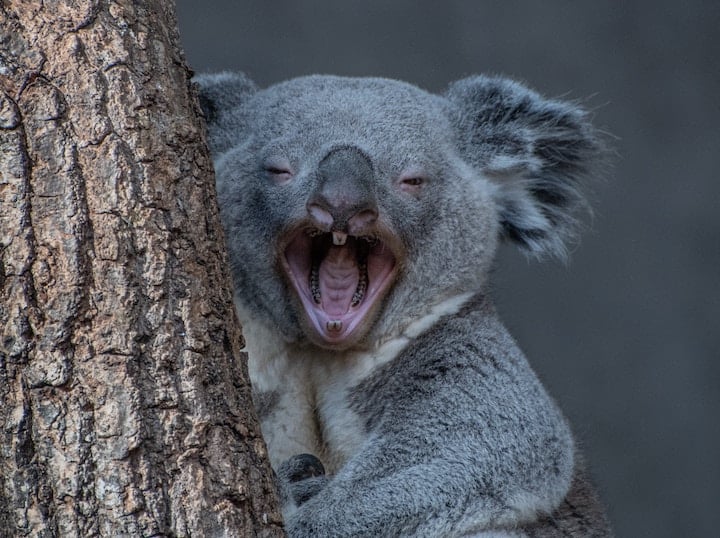
Koalas may look cute, but the noises they emit are anything but. Koalas are fairly territorial – at least towards other koalas, and when mating season comes around, male koalas' will make a loud, gutteral grunting or roaring sound to attract females, which can be equal parts terrifying and comical. Meanwhile, juvenile and female koalas tend to vocalise with more of an unearthly screech or squeal.
Both of these sounds can be more than a little disturbing and are likely to make your skin prickle if you hear them at close quarters on an evening walk.
They hate being ‘cuddled’ by humans

Image: everyday nicky/Visit Victoria
Koalas really don’t like being held or ‘cuddled’. Due to their docile appearance and dopey behaviour, they may not be able to outwardly exhibit fear, but research shows that koalas experience significant distress while in close proximity to humans, and many states in Australia have banned the practice of ‘cuddling’ for animal welfare reasons. Koalas are not an active participant in these interactions, and using them as a photo prop, usually against their will and at the expense of their wellbeing, is something you should definitely say no to.
Oh – and with their long, sharp claws and the fact that an estimated 50-80% percent of them have chlamydia, why would you even want to?
Their future is uncertain
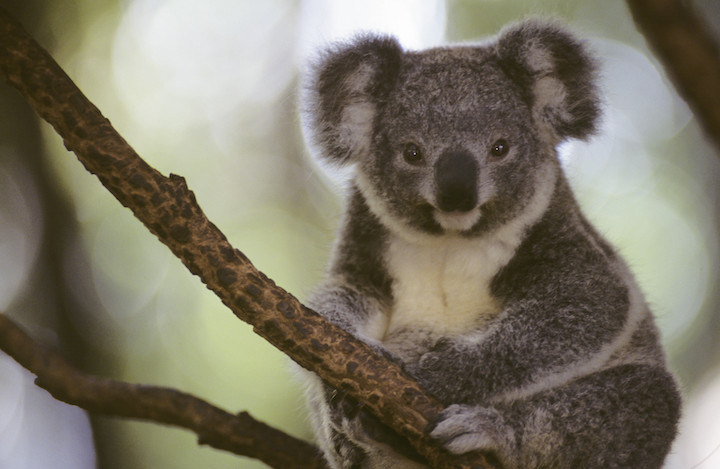
Image: Destination NSW
Koala habitat is being destroyed at an alarming rate. The large quantity of leaves they eat means they need a lot of trees to transfer between (about 100 trees per animal); but deforestation, bushfires and urban development are all an enormous threat to their environment, and once displaced, they are far more likely to get hit by cars or attacked by other animals.
Throughout their diminishing habitats across eastern Australia, there are estimated to be less than 100,000 individuals left in the wild, or even as low as 50,000. The situation is even worse in Queensland, New South Wales and the ACT, where they are listed as endangered and their population is critically lower.
Words: A. Hill-Lees
Read next: Where to see Aussie animals in the wild
Book direct and save
By booking direct with MyYHA you'll receive our exclusive discounted rates. Sign up or login to get 10% off at select properties.
Sustainability at YHA
Properties across our network feature energy-efficient and water-saving features like solar panels, rainwater tanks and recycling facilities.
